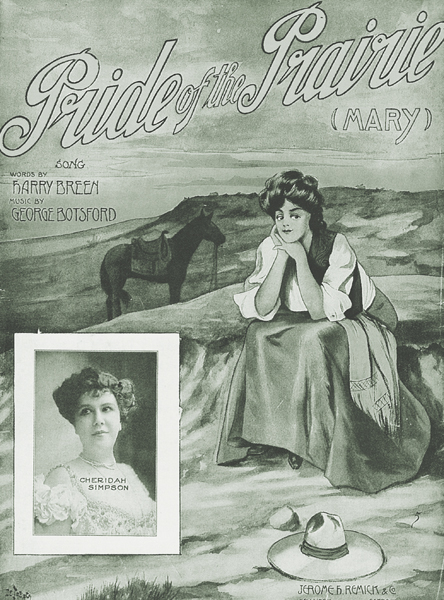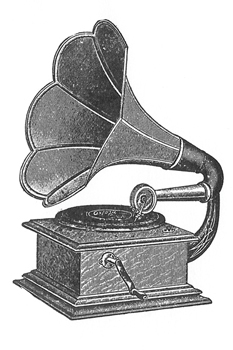These days, pitching a song is actually a pretty easy task compared to the song pluggers’ job in the early days of music publishing. Before iTunes, before CDs, before vinyl albums and singles—even before 78-rpm records, cylinder recordings, and piano rolls—there were song pluggers. The job title has been around for well over 100 years, but the actual duties of the song plugger have changed dramatically.

In the late 1800s, pluggers were employed by music publishing companies to promote the companies’ sheet music. In those years, the number of copies of sheet music of a specific song sold by a music publisher was the sole way of determining whether or not a song was a “hit.”
There’s so much noise in our lives and technology at our fingertips in the twenty-first century that it’s pretty hard to imagine what the late nineteenth century home must have been like: No sound coming from a television set, no music wafting from a radio or blasting from a stereo, no iTunes playing through computer speakers, no video games… Houses belonging to Americans prior to the mass production of cylinder recordings, gramophone discs, and radios were generally filled with silence.
It was an era when you had to be proactive if you wanted the sound of musical entertainment in your home. You needed at least one instrument in the parlor and at least one person in the family who could play it.
For most nineteenth-century Americans, the musical instrument of choice was the piano. And if someone in the family learned to read music, sheet music would be purchased so the family could stand around the piano and sing, while the pianist in the family read and played the musical notes transcribed on that sheet music.
Music publishers stayed in business, then, by printing sheet music and selling it to all those people with pianos in their parlors. The goal of each music publisher was to convince those piano-owning families to want to buy the sheet music of the songs the publisher printed. Thus the position of the song plugger was created.
“Song plugger” is definitely an odd job title, but perhaps it sounds slightly more impressive than “traveling salesman,” which is essentially what song pluggers of that era were. Music publishers hired song pluggers to go around the country selling sheet music to a town’s music stores, department stores, and the local “five and dimes.” (In case you’re too young to remember them—and unless you’re even older than I am, you’d just about have to be—“five and dimes” were variety stores that carried items that cost either five or ten cents.)
Unlike their modern-day equivalent, song pluggers of the late 1800s and early 1900s had to be able to sing and play the piano. It was the plugger’s job to “sell” the song by performing it. If the person in charge of deciding what sheet music was going to be sold in the store liked the song the plugger was plugging, he or she would order copies of the sheet music of that particular song.
At that point, the song plugger’s job was done for the day, and he would take his wares on to the next town. Meanwhile, the stores that bought the sheet music also had a person on staff with the exact same title. It was that song plugger’s job to learn all of the sheet music in the store and be able to play it for customers. The store’s in-house song plugger spent his or her days at the piano, playing and singing whatever sheet music a customer wanted to hear. If the customer liked the song, a piece of sheet music would be sold. If enough customers bought sheet music of the same song in enough cities and towns across the country, that song was considered a hit.
The late 1800s was also the era when the theatrical genre known as vaudeville came into existence. Vaudevillians were troops of singers, musicians, dancers, comics, jugglers, acrobats, magicians, and other entertainers who traveled across the country putting on shows in local theatres and music halls.
So while some song pluggers were still traveling salesmen pitching sheet music to store owners, other song pluggers began pitching songs to vaudeville singers. And since New York City was home to vaudeville’s booking agents, many vaudeville theatres, and the industry trade paper of that era—the New York Clipper—it also became home to most of the major music publishers, and therefore, home to most song pluggers.
Due to the fact that there was now an elaborate passenger train system across the entire country, vaudeville troops could perform in any town with a train station and a theatre. For music publishers, that meant every vaudeville theatre was filled with potential sheet-music customers. Therefore, the primary goal of the New York–based song plugger was to charm, woo, cajole, beg, or otherwise convince vaudeville singers to perform songs owned by the song plugger’s employer, the music publisher.
As would later be the case with motion picture and television actors, as well as with performers on radio and recordings, the more popular vaudeville acts were the “stars” of their day. If a song plugger was able to convince one of those stars to perform a song the plugger represented, the music publisher would often print sheet music of that song with the performer’s picture on the cover. That way, when the vaudeville audience would see and hear that particular performer singing the song in person, those who wanted to be able to buy the sheet music of that song would go to the store, find the sheet with that performer’s picture on it, and rack up another sale for the music publisher. Not only did the cover photo concept help to sell sheet music, it was also a way of enticing the performer to keep the song in the act (and maybe even be enough of an ego stroke to cause that performer to add more of the publisher’s songs to his or her repertoire in exchange for more sheet-music cover photos).

Sheet music for the song “Pride of the Prairie (Mary),” with a photo of vaudeville star Cheridan Simpson on the cover.
It wouldn’t be long though before twentieth-century technology would begin to impede on vaudeville’s popularity. With both recordings and radio becoming exciting new forms of in-home entertainment in the 1920s, vaudeville began to lose a lot of its steam.
Just before the vaudeville genre died out in the 1930s (primarily because motion pictures were now being shown in the theatres where live performances had once been the main attraction), a Saginaw, Michigan, songwriter named Gerald Marks went to see Belle Baker performing at a vaudeville theatre in Detroit.
At the beginning of that decade, Marks and his partner, Seymour Simons, had written “All of Me”—a song they believed in so much that Gerald traveled from Michigan to New York to try to get it published. Over fifty years after that ill-fated trip, Gerald told me, “I was my own song plugger, pedaling that song up and down the street. Every single publisher I played it for turned it down. I only had enough money to stay in New York for a week, so once the money ran out, I went back to Saginaw.
Not long after that, I saw that Belle Baker was going to be performing in Detroit. She was a huge star at the time—both in vaudeville and on Broadway. What happened next was a series of lucky accidents. The first accident was that I was able to get backstage. The second accident was that she had a piano in her dressing room.
I started playing the song for her while she put her makeup on, and as I was singing, she suddenly burst into tears. Later I found out that the night I sang “All of Me” for Belle Baker, it was the first anniversary of her husband’s death.
She essentially became my song plugger, performing it on the radio that very night at the Fisher Theater in Detroit.
The song was so meaningful to Ms. Baker that she began to cry again as she sang “All of Me” in front of the live audience. Her tearful performance was picked up by the national press, making “All of Me” a very sought-after song by other artists. Within weeks, it was a No. 1 hit for Paul Whiteman and His Orchestra, with Mildred Bailey on vocals. Louis Armstrong’s recording of the song came out less than a month after Whiteman’s, and it, too, went to No. 1.
Over the years, “All of Me” would become one of the most recorded songs in the history of American popular music, being cut by over 2,000 artists including—you guessed it—both Frank Sinatra and Willie Nelson.
***
Music publishers and song pluggers had to adapt to the changing times, as did the stars of vaudeville. Visual artists such as jugglers, acrobats, and magicians were pretty much out of luck in the new world of radio and recordings, but many popular vaudeville singers developed even larger national followings thanks to these new entertainment formats.
A few years earlier, the US Copyright Act of 1909 had granted music publishers the right to be paid two cents for every “mechanical device” sold. Initially the law was specifically referring to a device called a piano roll. A piano roll looked like a scroll with a bunch of holes punched in it, and was used in player pianos. Player pianos were exactly that: self-playing pianos containing a pneumatic device that operated the piano keys via the holes in the piano rolls. Each perforation caused a specific note to be played.
Congress determined that publishers had created a monopoly in the marketplace by granting one specific piano roll company rights to their songs, to the exclusion of all other piano roll manufacturers. Therefore, the 1909 copyright law determined that two cents would be the statutory mechanical royalty rate all piano roll companies would be required to pay for each piano roll sold. As long as the piano roll manufacturer paid the two cents per sale, a publisher couldn’t refuse to allow the piano roll company to manufacture rolls of that music publisher’s copyrights.
Not long after the 1909 copyright law was enacted, cylinder recordings and 78-rpm discs overtook the popularity of piano rolls. Under the copyright law, recordings were also considered to be mechanical devices. Today, any device sold that contains a musical recording (including a digital download) requires the manufacturer or digital distributor to pay “mechanical royalties” for each copy sold and/or downloaded. Luckily, the rate—which changes every few years—is now substantially higher than two cents.
For song pluggers in the era of 78-rpm records and early radio, pitching tunes to what was left of the vaudeville circuit performers became much less important than trying to get the songs they represented cut by recording artists or performed on the radio (or better yet, both).
In 1914, the American Society of Composers, Authors and Publishers was formed. Known in the industry by its acronym, ASCAP, the organization was created to collect royalties for public performances of copyrighted works—another right granted by the 1909 copyright act.
An industry that had survived for decades on sheet music sales alone now had three separate income streams: print royalties (sheet music and songbooks), mechanical royalties, and performance royalties.
The good news for song pluggers was that they didn’t have to be able to sing and play the piano anymore. The bad news was—with more money to be made in music publishing than ever before—the competition suddenly became much stiffer.
